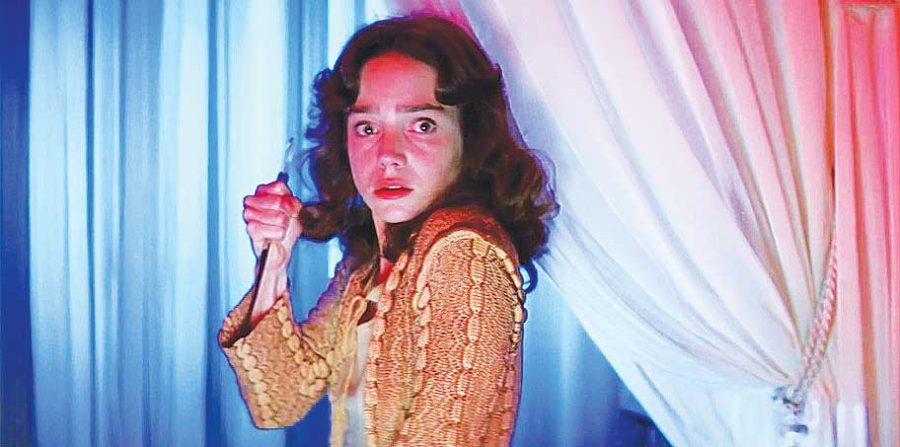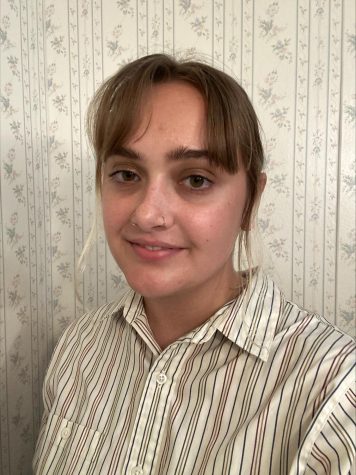Still creepy after all these years
“Suspiria,” an experimental Italian horror film directed by Dario Argento, released in 1977, is a kaleidoscopic, sinister fairytale that captures the horror genre through a technicolor lens. Ignoring the campiness of the old-school practical effects, (unless you are like me and love them), “Suspiria” was once considered one of the most disturbing films ever made in its hay day, making a promise with its tag line that, “The Only Thing More Terrifying Than the Last 12 Minutes of This Film Are the First 92.”
The film begins with Suzy Bannion (Jessica Harper, of “Phantom of the Paradise,” “My Favorite Year”), an American ballerina who is traveling to Freiburg, Germany, to attend a prestigious dance school. Suzy arrives at the Tanz Dance Academy as fellow student Pat Hingle (Eva Axén, of “Orfeo 9,” “The Golden Mass”), runs away in fear. After a series of strange happenings and brutal murders around the school, Suzy, along with classmate Sara (Stefania Casini, of “1900,” “Lontano da dove”), stumble into the mystery involving the suspicions about the academy that Pat had before she disappeared.
The score of “Suspiria” was composed by Italian rock band Goblin, along with Argento himself. The music is a cacophony of ghoulish screams, percussion crashes, and gothic synths. The score of the film adds to the unsettling atmosphere. Since the film was completely dubbed in English, Argento would have the soundtrack blaring as the actors worked to up the atmosphere on set. Goblin’s music has become synonymous with the movie, as both sound and image play a crucial role in how the film is perceived, although the band composed the album before the film was made.
Cinematographer Luciano Tovoli stuck to primary colors such as red, yellow, and blue when working on this film, as Argento wanted him to model the color scheme after the 1937 animated film “Snow White and the Seven Dwarfs.”
There are dream-like hues of pinks and oranges, and a more sinister deep red that follows Susie as she becomes a target of the evil lurking about. The film was shot on Eastman color Kodak stock and then printed using one of the last remaining three-strip technicolor processing machines. Argento pushed for an expressionistic, fairytale aspect for the film, wanting it to resemble an acid trip.
An interesting anecdote is that Argento originally wrote the characters as children, but the script was considered too dark and violent to include child actors (this was decided by the studio and producer Salvatore Argento, who was also Dario’s father). The characters were changed to college aged students, though the script still maintains a child-like quality, with bickering among the girls when Susie first arrives, chats about crushes, and a naivety that adds to the uncertainty of it all. Another easter-egg to the original script is that the door handles throughout the movie are at head level with the actors.
Along with Argento’s other movies, “Inferno” (1980), and “Mother of Tears” (2007), “Suspiria” is part of his Three Mothers trilogy, based on 19th-century writer Thomas De Quincey’s collection of essays titled “Suspiria de Profundis,” meaning “sighs from the depth.” These essays were written in prose poetry, and are an examination of memory and human consciousness while under the influence of hallucinogenic drug use, specifically opium. Argento’s Three Mothers are portrayed differently than they are in De Quincey’s essay, “Levana and Our Ladies of Sorrow,” based on Roman goddess Levana and De Quincey’s original characters: Mater Lachyrmarum, Our Lady of Tears; Mater Suspiriorum, Our Lady of Sighs; and Mater Tenebrarum, Our Lady of Darkness. Each of these characters is used to represent the forces at play in each of the three films.
Considering “Suspiria” is going on fifty-years-old, the film still holds up for horror fans who prefer a more artistic angle to their scares. Now a cult classic, “Suspiria” is a film I would recommend to those fans of the genre who prefer a disturbing slow burn to overused jump scares. “Suspiria” is free to stream on Tubi.







